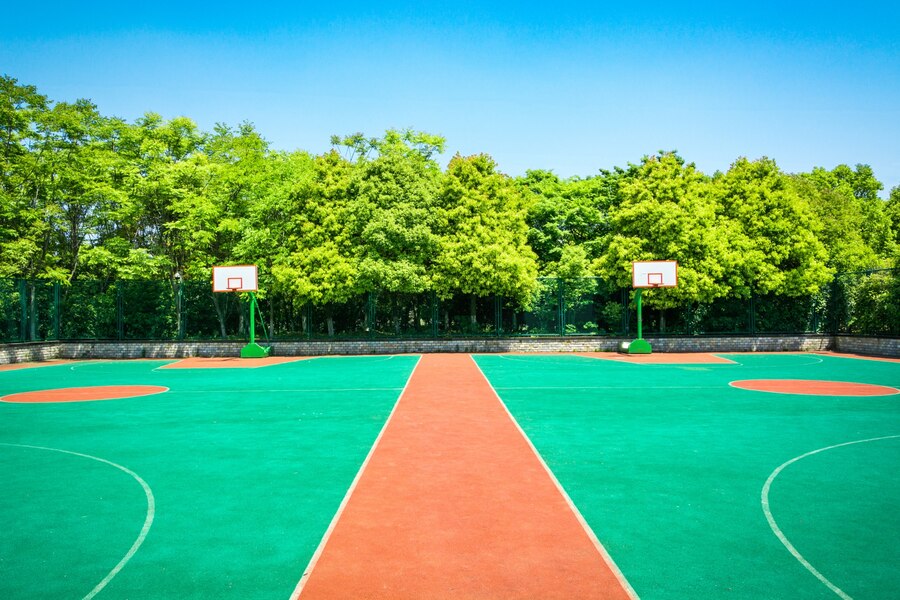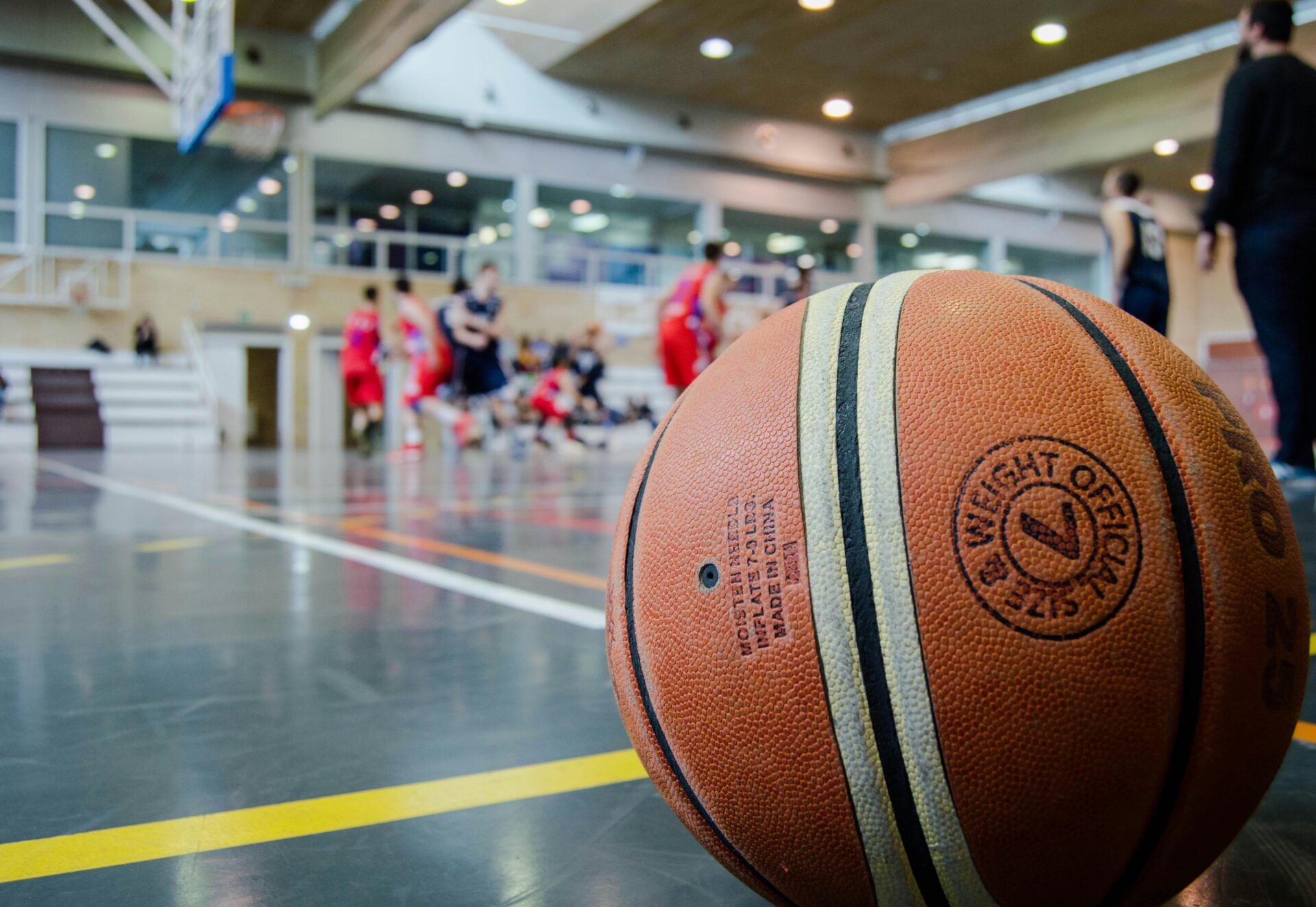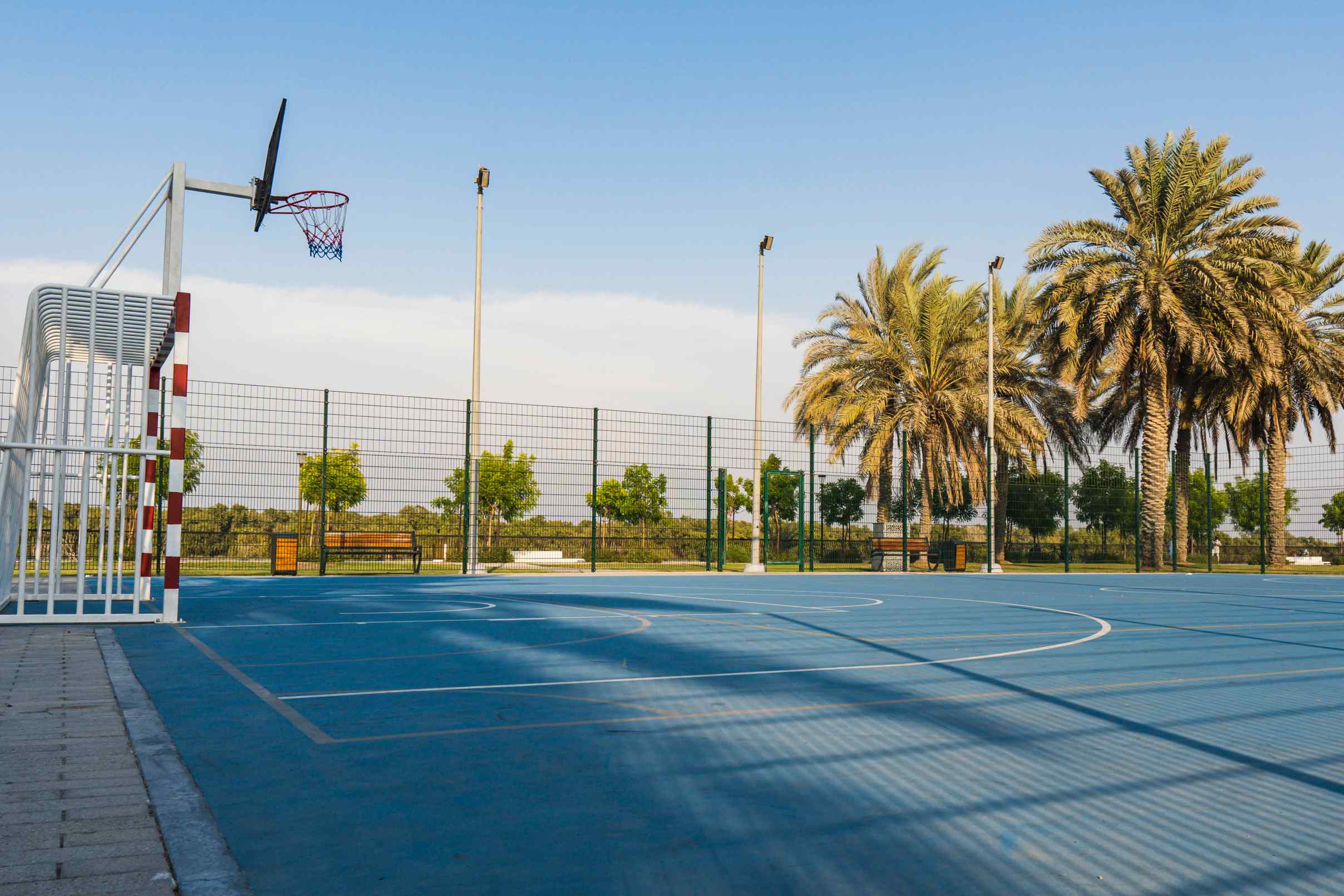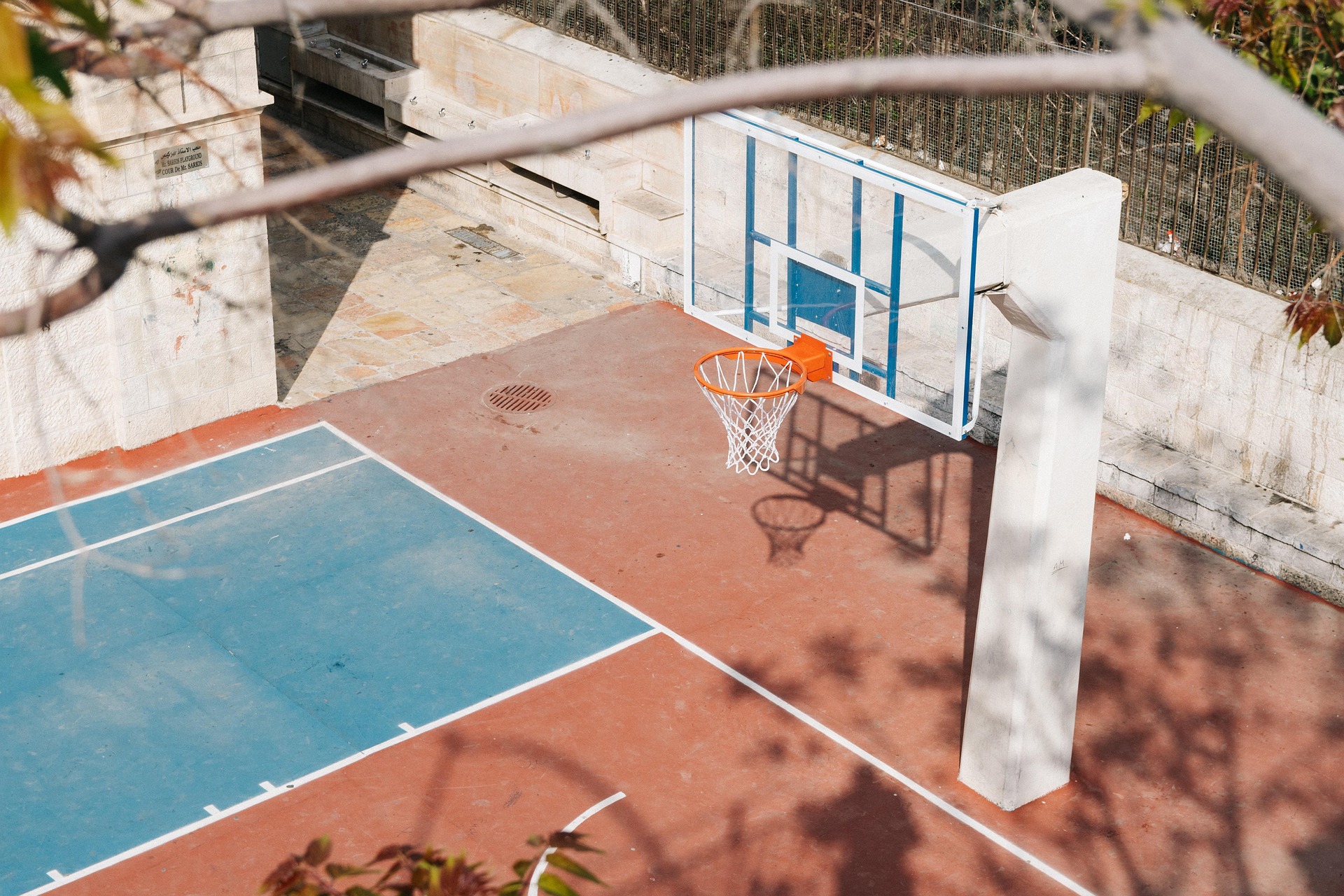Outdoor game courts are meant to be played day in and day out, but what happens when the weather doesn’t play along? From blistering summer heat to icy winter mornings, weather conditions can break down even the most resilient surfaces. It’s due to these factors that you need to know how the weather affects your sports court—not just for safety but for performance and value in the long term.
Here in this article, we will learn how outdoor sports flooring handles various types of weather, what material is most suitable, how to take care of your surface, and what to look out for when you need to replace. If you maintain a school court, a public park, or a private sports facility, weather has to be part of the game plan at all times.
Then we can begin: What can really happen to your court because of the weather?
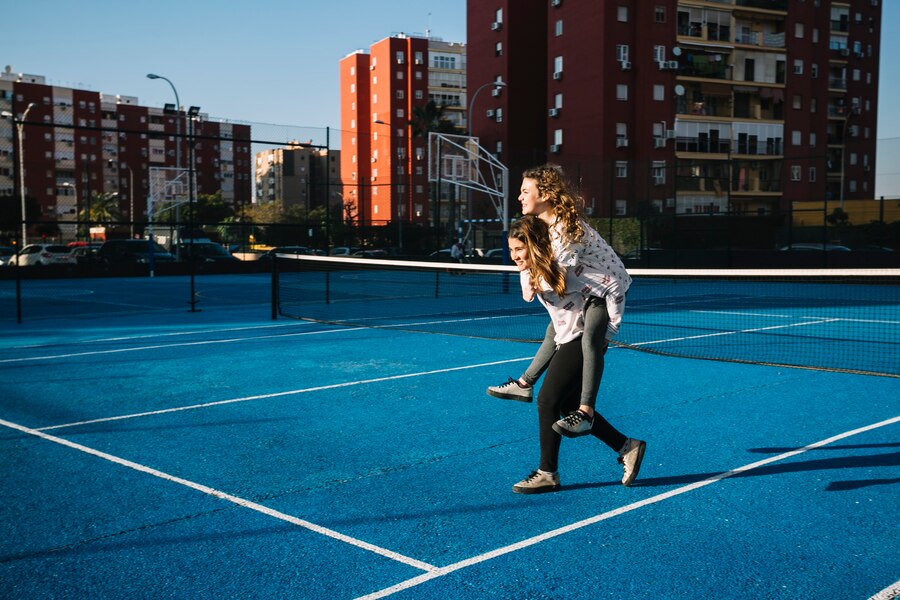
Why Outdoor Sports Flooring Needs to Stand Up to the Weather
Most outdoor courts are wonderful when they’re new. The lines are crisp, the surface is firm to walk on, and the colors are vibrant in the sunlight. But after a few months—a single harsh season—you may notice the telltale signs of distress: faded color, water puddles that don’t evaporate, or even tiles beginning to curl over at the edges.
That’s because weather affects outdoor sports flooring in ways that we do not always think about. Heat can expand certain materials, and cold can make them crack or become brittle. Rain and snow can erode the surface or seep underneath the surface and destroy the foundation after some time.
When a sports surface cannot adapt to these changes, it rapidly deteriorates. That is more repairs, more expense, and sometimes even downtime when the court is not safe to play on. So what types of weather are most troublesome?
Let’s have a look at how the seasons can affect your outdoor court.
How Weather Impacts Outdoor Sports Flooring in the Real World
When the Heat Comes to Your Court
During hot weather, the sun not only warms the surface, but it also softens the floor material, affecting grip and ball bounce too. If the floor becomes too hot, it would even be dangerous for the player, especially the children, or for barefoot/bare-arched shoe-preferred or thin-soled shoe players.
The second concern is color fading. Sunlight UV light degrades the color in most conventional court materials so that, once bright, courts end up faded or uneven. With time, direct heat also makes the material expand, which can result in the tiles shifting or edges rising.
Therefore, if you reside in an area that has hot summers or high sun exposure, your court should have materials that won’t degrade due to heat without compromising performance.
The Freeze and Thaw Conflict
And then we have the problem of cold temperatures. When the temperatures are below freezing in these climates, issues can arise again. When water leaks through cracks or beneath the tiles and freezes, it expands—expansion presses against the surface, causing cracks, bumps, or tile separation.
This freeze-and-thaw cycle is especially devastating on older or poorly laid surfaces. Once cracks start, they only get progressively worse with each cold winter. Eventually, the whole court could become uneven and unsafe to play on.
So, how do you prevent freeze-thaw damage from occurring in the first place? It starts with the material selection.
Wet Weather and Slip Issues
Water is among the biggest dangers to any outside surface. Rain, snow, or dampness, the result is slippery surfaces, mold, and even structural damage if it seeps behind the court. Several courts become unusable for hours—or even days—after a rain shower.
That’s why drainage is necessary. Outdoor Sports flooring outside must be built to enable water to travel through and evaporate quickly. Otherwise, puddles are permanent, and slippery spots lead to harm.
Now that we have seen how different weather creates such real problems, what are we to do about it?

What Constitutes a Good Outdoor Sports Flooring System
The good news is that not all sporting surfaces are created equal. Some of them are made of materials that react to heat, cold, and moisture far better than others. High-tech plastic tiles like polypropylene, for example, are the best option for outdoor sports flooring. They won’t absorb water, and they will withstand hot and cold temperatures without warping or cracking.
Another intelligent aspect is integral drainage. Most contemporary outdoor sports flooring systems feature an open-grid configuration that permits water to pass through the tiles and off the court. This dries the surface and minimizes the risk of slips or water damage below.
Shock-absorbing layers also provide protection against damage to the court and make it a safer environment to play in. The layers take in pressure from jumping and movement, and they also make the freeze-thaw cycles less impactful.
With the right mix of materials and design, your sports surface can go from weather-prone to weather-smart. Even the best systems, however, require some assistance to remain in top-notch shape.
Tips for Maintaining Outdoor Sports Flooring in Top Condition
No outdoor surface is ever maintenance-free, but a small amount of effort can make a big difference. Here are a few things you can do to maintain your court in top condition, regardless of the season:
Sweep on a regular basis to clear leaves, dust, and debris that may retain water or create mold.
Inspect drainage after rain to ensure water is not accumulating under or between tiles.
Wash the surface regularly with mild detergent and water–pressure washing is acceptable for stubborn stains.
Inspect the court next winter for cracks, loose tiles, or sloping surfaces due to freezing and thawing.
Blow snow away using soft tools, like plastic shovels or brushes, to avoid tile damage.
By following these steps, not only will your floor be longer-lasting, but your players will be safe and your court will be professional-looking. Now let’s look at one company in particular and see how they approach designing surfaces to address these very issues.
How VMKON Makes Weather-Resistant Outdoor Sports Flooring
VMKON is a company that knows how critical durability is in the case of sports surfaces. That is why our outdoor courts are constructed with resilient, weather-resistant materials that can handle sun, rain, and snow.
Our open-grid court tiles are constructed using top-grade polypropylene that is resistant to UV degradation and will never soak up water. What this does is seal in colors and maintain the surface hardness even when exposed for long durations. Open-grid also promotes drainage, and rainwater just flows through rather than collecting on the surface.
The other great characteristic is flexibility. VMKON tiles snap onto one another, allowing expansion and contraction with a temperature change. This reduces stress on individual tiles and reduces cracking or edge lifting.
For anyone who manages an off-site court—be it at a school, a city park, or a private sports club—having a tough, weather-resistant surface can mean the difference between success and failure.
Final Thoughts
The weather can’t be controlled, but your outdoor sports flooring can. We’ve witnessed how searing heat, freezing cold, and rain can ravage traditional materials. But with well-designed surfaces, smart materials, and a bit of seasonal maintenance, your court can be safe, solid, and game-ready throughout the year.
If you’ve noticed wear, cracks, or puddles on your existing surface, it may be time to consider an upgrade. Weather-ready outdoor sports flooring today is designed to play regardless of the forecast—and built to withstand years of use.
Do you need a court that can last through the weather? VMKON produces long-lasting, weather-resistant sports courts that can face rain or shine. From schoolyards to city courts to private clubs, our modular systems give you the durability, drainage, and UV protection you need.
Ready to weatherproof your court the smart way? Discover VMKON’s outdoor sports flooring solutions today and start building a better, longer-lasting sports surface.
Because when the weather turns nasty, your court shouldn’t have to.
Frequently Asked Questions (FAQs)
1. What is the ideal material for outdoor sports flooring?
One of the best options is polypropylene. It is UV-resistant and durable, and it resists temperature fluctuations without cracking or distorting.
2. How does rain impact game court surfaces?
Without drainage, rain can create puddles, slippery floors, and even mold or rot under the tiles. Surfaces with inherent water channels are ideal.
3. Will cold weather affect the modular court tiles?
Yes, high-quality modular tiles are made to expand and contract along with temperature changes, which reduces the risk of cracking or lifting caused by freeze-thaw action.

